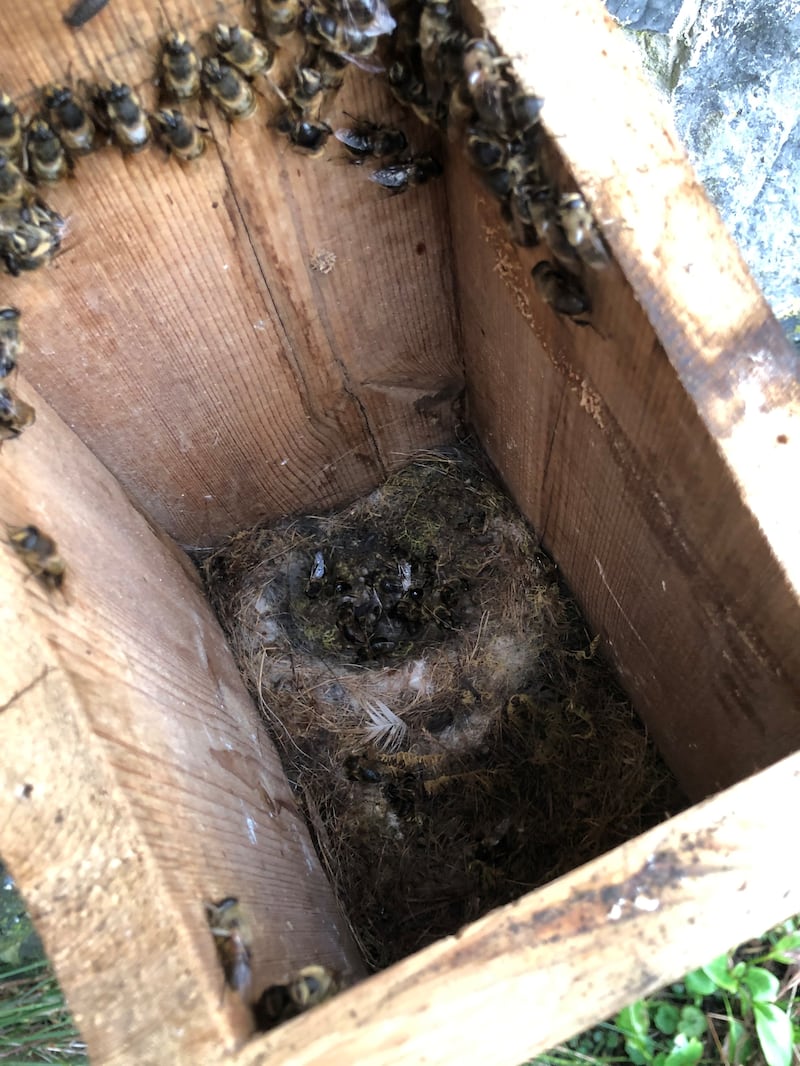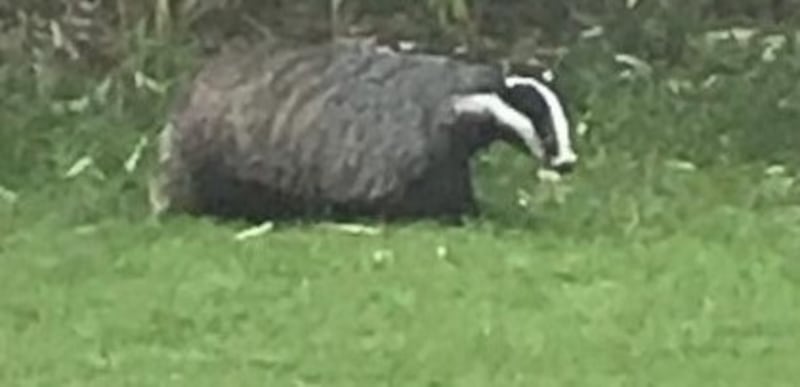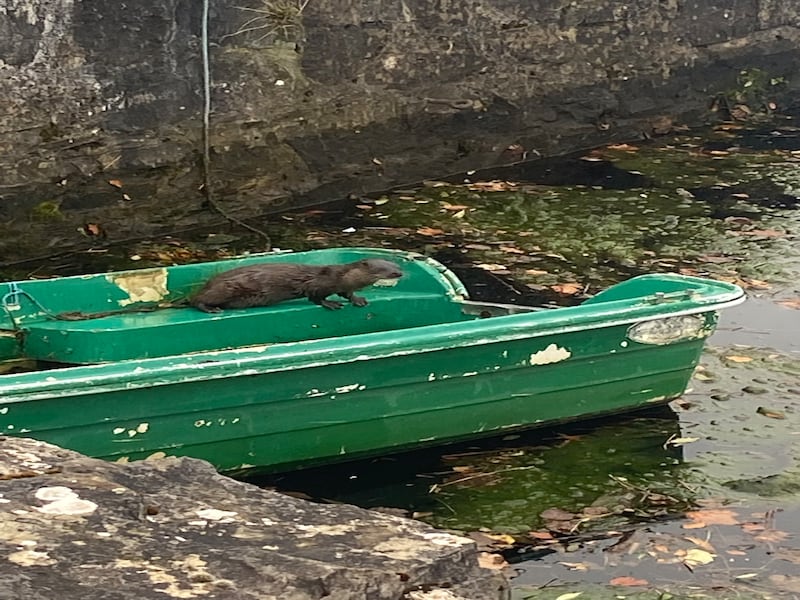This little chap has been a regular visitor to a mahonia in my garden through December and January. He had a buddy with him today. Finbarr Conway, Dublin
“This little chap” is a queen white-tailed bumblebee. They were around a lot this winter as it was so mild. Mahonia is a great source of pollen and nectar at this time of year, when so little else is flowering. More queens are appearing now as spring advances so leave any dandelions that appear.

I was preparing two bird boxes for spring nesting but found tenants in situ: bees in one box and a large spider alongside a small, possibly wasp’s nest in the other. What should a landlord do? Alan Moore
This is a conundrum right enough. Is there a hierarchy of wildlife? Are bees more important than birds? Is possession nine-tenths of the law? Are there moral implications? It is a good idea to clear out nestboxes at this time of year to make them ready for new birds who will soon be prospecting for nesting sites. The old nests will be contaminated with bacteria, feather lice etc, so definitely have to go. The wasp’s nest is one of last year’s that did not mature, having lost its queen. You can take it out with impunity and admire the wasp paper and paper cells. You can whoosh out the spider on a nice dry day. It can live in other places besides a bird box and that is not a breeding web. The snail can go as well.
The other box appears at first glance to be a home for bees and do they warrant keeping, given that our bees are under such threats? In fact, they are not bees at all but overwintering hoverflies that just look like bees – probably drone flies, Eristalis tenax. Evict them on a warm sunny day; they will find other lodgings by evening. And then clean out the empty boxes and scrub with boiling water (no pesticides or poisons) and allow to dry. Re-erect them wherever they were last year, which obviously worked well, and wait for new tenants to arrive.

Have the dining habits of crows changed recently? They seem to have developed a taste for seafood along the Blackrock/Booterstown seashore. Could it be a Covid development with increased numbers of humans leaving food waste there that attracted them in the first instance? Michael Keegan
Covid changed the habits of some humans, who now spend more time out of doors observing nature than they had previously. Hooded crows that live near the coast have always hunted on the shore, especially during winter. They are well able to open shells – sometimes even dropping them from a height on to rocks or the road to break them open.

I saw a badger in broad daylight on Waterford Island recently. But I thought badgers only came out at night? Walter Dwyer, Tipperary
Usually, this is the case, but the badgers on Little Island in the Suir below Waterford city feel so safe and unthreatened by humans that they have always emerged to forage for food at any hour of the day or night.

We spotted this otter in a boat, while walking to the Quay School in Westport with the kids. Grace Tighe, Co Mayo
Otters are easier to see on the coast than in river systems and lakes. They forage here for crabs and small fish among seaweed and in rock pools, and are more active by day, particularly in cold weather. This one was having a rest on a dry boat, where it felt safe enough from passing humans.
Please submit your nature query, observation, or photo with a location, via irishtimes.com/eyeonnature




